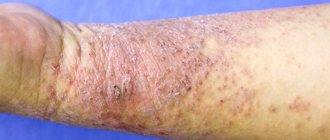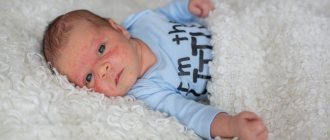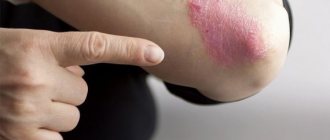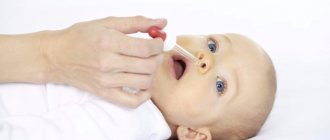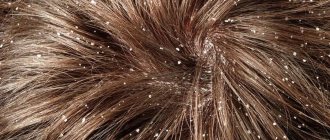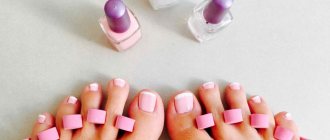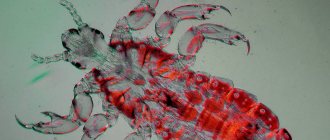10% of patients consult dermatologists with complaints of symptoms of contact dermatitis.[1] They appear in response to the body's immune system to the influence of external irritating factors. It can be:
- detergents;
- dyes;
- decorative cosmetics and perfumes;
- some metals;
- household chemicals, etc.
1-3% of dermatitis are associated with allergies to these substances. Since women come into contact with them more often, they are more susceptible to these diseases[2]. In addition, symptoms of dermatitis are observed in adults who work in chemical production, medicine, hairdressing, as well as in representatives of other professions who have to deal with irritants. According to statistics, 7% of occupational diseases are allergic contact dermatitis[1]. There is another type of this skin pathology – simple contact dermatitis. Both diseases develop according to a similar mechanism, but also have some differences in the course, and therefore require a different approach to treatment. Regardless of what disease the patient suffers from, simple contact or allergic dermatitis, he is prescribed external local remedies in the form of ointments or creams. The type of agent used in treatment is selected depending on the form of the disease (acute or chronic), the severity of the course, as well as the individual characteristics of the patient.
Mechanism and causes of occurrence
The intensity of development and severity of dermatitis symptoms depend on two factors: the activity of the immune system and the strength of the irritant. Thus, the disease can manifest itself after a single interaction with a harmful substance, if it was too aggressive. If the irritant is weak, signs of dermatitis will appear after quite a long contact with it. However, if the human body is very sensitive, an allergic reaction will occur immediately, regardless of the concentration of the irritant.
Based on the body's reaction, you can determine whether the disease is simple contact or allergic dermatitis. If signs appear immediately, limited only to the site of contact with a chemical or physical irritant (friction or scratches), but no other allergy symptoms are observed, we are talking about simple contact dermatitis.[2] Allergic skin disease develops as a result of increased sensitivity of the immune system to a specific pathogen. Contact with it leads to an inflammatory process that extends beyond the affected area. Lesions of the skin or mucous membranes in allergic dermatitis can occur anywhere, since the concentration of the irritant and its route of entry into the body do not play a significant role.[3].
Simple contact dermatitis occurs when interacting with certain substances, as well as under the influence of certain physical factors, such as overheating, compression, squeezing and various injuries to the skin. Most often the disease develops due to:
- kerosene;
- phenol;
- lime;
- acids;
- organic solvents;
- various oils[2].
Not every substance can be an allergen; there are several groups of materials that can cause an allergic reaction in dermatitis. This:
- low molecular weight chemical compounds, metal ions that can penetrate the body through the skin - aluminum, cobalt, chromium and others;
- some medications, both local and for oral administration - antibiotics, anesthetics, agents containing formaldehyde, steroid drugs;
- cosmetics, perfumes and hair dyes that contain alcohol, preservatives and fats;
- rubber products and glue. [3].
In addition, there are plants, contact with which can trigger the development of allergic contact dermatitis. These include representatives of the Asteraceae family - chrysanthemum, poison ivy, primrose and others.
The most common dermatitis in children: features of diagnosis and therapy
According to foreign researchers, approximately 25% of all visits to doctors are complaints about skin pathology [1]. Among them, the most common dermatitis in children is seborrheic, contact (diaper) and atopic. In recent years, scientists have noted an increase in the incidence of these skin diseases in general practice. Thus, in the Netherlands, during the period 1987–2001, doctors most often diagnosed fungal (dermatophytoses), atopic, bacterial (impetigo) and contact dermatitis in children aged 0–17 years, which accounted for 57% of all cases of skin diseases [2].
Seborrheic dermatitis. The fungus Malassezia furfur is considered a possible etiological factor for seborrheic dermatitis. These microorganisms usually colonize healthy skin, but they also play an important role in the etiology and/or exacerbation of folliculitis, seborrheic and atopic dermatitis.
There are two clinical forms of the disease: seborrheic dermatitis of infants and seborrheic dermatitis of adults.
Seborrheic dermatitis affects 10% of boys and 9.5% of girls; more often - children aged the first 3 months of life, then the incidence decreases slightly (by 2 years it usually goes away or persists until 4 years of age). In adults, seborrheic dermatitis is diagnosed at any age: the rash is represented by red itchy papules covered with scales, on the scalp it resembles dandruff.
In infants suffering from seborrheic dermatitis, already at the 2-3rd week of life, accumulations of fatty, sebaceous scales (gneiss) appear on the skin of the scalp (to a lesser extent on the forehead, cheeks, in the folds behind the ears), and in cases of damage to large folds of the skin of the body and extremities - a maculopapular rash, also covered with scales on the periphery. The rash can also be localized in the area of the external auditory canal and sternum, on the neck, in the axillary and groin areas. Itching is moderate or absent [3]. When the rash is localized in the diaper area, a bacterial infection may occur, which sometimes makes treatment very difficult. If left untreated, the rash may spread to other areas of the body, becoming generalized. Against the background of seborrheic dermatitis or after its disappearance, some children develop another dermatitis - atopic, in the etiopathogenesis of which (especially the severe form of the disease) Malassezia furfur also plays a very significant role.
Important distinguishing signs of seborrheic dermatitis are the absence of itching of the skin, as well as the predominant lesion of the scalp and diaper area in children suffering from seborrheic dermatitis. Atopic dermatitis is characterized by skin exudation, while seborrheic dermatitis is characterized by an earlier onset and the absence of a hereditary burden of atopy (Table 1).
Treatment of seborrheic dermatitis is not particularly difficult. Manifestations of the disease in the scalp in newborns (milk crusts) can spontaneously go away by the 6-8th week of life (or for such children it is enough to prescribe daily washing of the hair with a special shampoo, followed by the application of mineral or olive oils). They also cleanse irritated skin with areas of hyperseborrhea, especially in problem areas. For this purpose, the use of cleansing gel “Bioderma Sensibio DS”, “Saforel” is recommended, “Topicrem” is also recommended, shower gel foam is for skin prone to mycoses, “Friderm Zinc” (for flaking of the scalp).
After preliminary cleansing, the skin is dried and a dermatological cream (for example, Bioderma Sensibio DS) is applied to problem areas (in newborns and children - scalp, forehead, buttocks; in adults - wings of the nose, eyebrows, chin).
Of the dermatological shampoos specially designed for the treatment of seborrheic dermatitis in children and adults, Nizoral shampoo containing 2% ketoconazole is widely used. However, the same clinical improvement in a comparative study was noted with the use of Kelual DS shampoo, which has fungicidal, fungistatic, anti-inflammatory and keratoregulating effects due to the content of the non-imidazole antifungal drug ciclopiroxolamine (D. Shuttleworth et al., 1998). Cyclopiroxolamine has a high coefficient of fungistatic action (suppression of proliferation of Malassezia fungi); in addition, it has a unique anti-inflammatory effect, comparable even to the effect of a mild corticosteroid (K. Gupta, 1998). The composition of the Kelual DS shampoo also includes another antifungal drug - zinc pyrithione 1%, which has a fungistatic and kerator-reducing effect. The combination of two antifungal active components has a synergistic effect in suppressing the proliferation of Malassezia fungi, which is reflected in the high coefficient of fungistatic action in the Kelual DS shampoo, which, as the study has shown, is superior to the inhibitory activity of ketoconazole. Additionally, the Kelual DS shampoo contains keluamide, which has a mechanical dispersive effect, ensuring rapid elimination of squams (keratolytic effect).
In case of the formation of seborrheic crusts on the head and severe peeling of the skin, you can also use the Friederm Tar shampoo, Mustela Stelaker Cream (apply it to seborrheic crusts in children, leave it overnight and then wash it off with Mustela Bebe Foam Shampoo for newborns).
Typically, medicated shampoos are used 2 times a week, the course of treatment is 6 weeks.
Other nonpharmacologic approaches (eg, limiting the use of hair sprays and gels, exposure to sunlight) may also be helpful in older children and adolescents.
For seborrheic dermatitis, topical corticosteroids should be avoided as first-line treatment [4]. Recently, a report appeared on the high therapeutic activity of the combined use of antifungal shampoo (ketoconazole) and the topical calcineurin inhibitor tacrolimus (currently in Russia this series of non-steroidal anti-inflammatory drugs is represented only by Elidel cream (pimecrolimus 1%)) [5].
In recent years, Malassezia furfur has been considered not only as a trigger factor for atopic dermatitis in children and adults, but also as one of the causes of severe recurrent course of the disease, refractory to traditional therapy. Also, these microorganisms are more often detected in this variant of atopic dermatitis, when the skin process is localized on the head, neck and chest area (in the English literature, the so-called head and neck dermatitis - “dermatitis of the neck and head”).
Atopic dermatitis. Spergel and Paller provide the following clinical criteria for atopic dermatitis [6].
Mandatory criteria:
- itching;
- eczematous changes: chronic or recurrent; the most age-specific patterns involve the face, neck, and extensor surfaces of the extremities in infants and children; Damage to the flexor surfaces, especially in older children and adults, is less pronounced in the groin and axillae.
Important features in favor of this diagnosis (not found in all patients):
- onset of the disease at an early age;
- xerosis;
- atopy (IgE reactivity).
The diagnosis of atopic dermatitis can be made after excluding diseases such as scabies, allergic contact dermatitis, seborrheic dermatitis, psoriasis and ichthyosis.
As practice shows, atopic dermatitis is characterized by clinical polymorphism. Suffice it to say that the literature describes more than 26 separate locations of the skin process on parts of the body and nine typical signs of the disease, the main of which, in combination with dry skin, are three: itching, erythema, papules. However, the location of skin lesions often depends on age. Thus, in infancy (the onset of the disease before 2 years of age) the cheeks, face, neck, and outer surface of the limbs are affected. In the age period from 2 to 10 years, rashes are usually localized in the elbow and popliteal folds, on the back, back of the neck, and lateral surfaces of the torso. Adolescents and adults are characterized by damage to the face (mainly periorbital or atopic cheilitis), the dorsum of the hands, and in the area of the elbows and knees. Itchy papules are located against the background of lichenized and dry skin, often with pronounced peeling.
Today, external therapy is recognized as the most important, pathogenetically substantiated and absolutely necessary for every patient with atopic dermatitis, which includes proper skin care (cleansing/moisturizing/softening) followed by the application of anti-inflammatory drugs to it. According to the American prof. D. Leung, “moisturizing and softening the skin are key in the treatment of atopic dermatitis” [7]. Moreover, due to impaired barrier function and dry skin, moisturizers/emollients should be used even during periods of the disease when there are no symptoms [7, 8]. This approach is based on scientific data: in particular, in patients with atopic dermatitis, the same inflammatory cells that infiltrate the lesions are found in unaffected areas of the skin; in addition, the manifestations of skin hyperreactivity and xerosis in different areas of the skin are no different [7, 8]. Because of its hyperreactivity, atopic skin has the ability to change depending on fluctuations in air temperature, stressful situations, after eating certain foods, or for other unknown reasons. The condition of the skin also changes after applying external medications; Sometimes patients or doctors themselves can associate symptoms such as burning, increased itching, hyperemia with the external agent used, which often leads to discontinuation of the drug. In fact, the cause may be the above exogenous factors. If necessary, the doctor conducts a drug tolerance test on the patient. Rare cases of the development of allergic contact dermatitis even to the main anti-inflammatory drugs for the treatment of atopic dermatitis (topical corticosteroids or topical calcineurin inhibitors) have been described. Another feature of atopic skin is that its dryness, accompanied by transepidermal water loss, increases the systemic absorption of external hormonal agents and, consequently, their side effects [9].
Accordingly, effective treatment of dry and itchy skin may improve treatment outcomes for atopic dermatitis. However, it is impossible to influence such causes of dry skin as changes in the stratum corneum, disturbances in keratinization, the composition of the balance and amount of intracellular lipids, metabolism of transepidermal water, changes in skin pH, etc. simply by applying moisturizers and/or emollients to the skin. These are very complex physicochemical, biochemical and pathophysiological processes that occur differently in skin diseases. Recently, scientists have been considering dry skin in atopy from the point of view of a unified pathophysiological concept “atopy, dry skin and the environment” [10, 11]. Recognizing the importance of this approach, the dermatocosmetic lines “A-Derma”, “Dardi Lipo Line” were created, as well as a new unique emollient, which is used with great success in the treatment of atopic dermatitis abroad - “MAS063D” (Atopiclair) [12, 13]. Thus, according to Abramovits et al., in 94% of patients with mild to moderate atopic dermatitis, the need for topical corticosteroids completely disappeared within 50 days after using the non-steroidal hydrolipidic cream “MAS063D” (Atopiclair) [13].
The unique line of products “A-Derma” (“Egzomega”) uses the exceptional qualities of the oat extract of the Realba variety: amylose, amylopectin and β-glycans included in “Egzomega”, coming into contact with water, form a moisturizing and protective film on the surface of the epidermis . In addition, they promote the retention of lipids, polyphenols and proteins, forming a micelle “reservoir” that releases active substances as needed and provides prolonged action; proteins have an anti-inflammatory effect; phospholipids and glycolipids nourish and moisturize the skin; polyphenols have antiradical and anti-inflammatory effects; magnesium, iron, copper, zinc, manganese are protein cofactors. Egzomega products also contain essential omega-6 fatty acids and vitamin B3, which ensures the restoration of the structure and barrier function of the skin.
To care for the skin of patients with atopic dermatitis, other products from the medical and cosmetic series such as “Aven”, “Mustela Stelatopia”, “Uriage”, “Vichy”, etc. are also widely used.
Before using emollients/moisturizers, a patient with atopic dermatitis should comply with certain skin care conditions (cleansing with special hygiene detergents, using dechlorinated water, etc.). Moisturizers/emollients are applied after preliminary cleansing of the skin using medicated skin care products - usually the same line of medicinal cosmetics (Topicrem Bodygel, BioEcolie; Mustela Stelatopia, washing cream; Egzomega - cleansing shower oil for atopic skin, etc.).
In case of persistently recurrent course, as well as moderate and severe forms of atopic dermatitis, patients are advised to use medicinal cosmetics containing additional anti-inflammatory (for example, alphabisabolol, allantoin, dexpanthenol, etc.) or antifungal substances (for example, “Topicrem” gel - foam for body skin prone to mycoses, which contains piroctone olamine 1%).
In particular, the use of the Topicrem cosmetic line is recommended (Table 2).
The Dardia Lipo Line treatment products include natural hydrophilic substances - lactate, urea and glycerin, while cetearylethyl hexanoate and a mixture of medium chain triglycerides maintain the lipid balance of the skin. The combination of these components leads to the achievement of the best results in the maintenance therapy of allergic dermatoses, preventive skin care after the use of topical corticosteroids, chemotherapy and radiation, as well as in daily skin care. The water-fat and anhydrous forms of the products in this line are ideal for dry and very dry skin, are easily absorbed and evenly distributed over the skin (Table 3).
It has been proven that the effectiveness of moisturizers/emollients depends on the dose (they should be used regularly in sufficient quantities), skin pH, and also on patient compliance [7, 8, 12, 13]. It is especially important to use them before applying anti-inflammatory drugs to the skin (topical corticosteroids, topical calcineurin inhibitors). There are even cases in the literature of equivalent effectiveness of moisturizers and topical corticosteroids in patients with atopic dermatitis. In general, skin hydration and moisturizers significantly increase the effectiveness of complex therapy for atopic dermatitis and the quality of life of such patients. In addition, moisturizing preparations have a kind of preventive effect even before the appearance of pronounced symptoms of exacerbation of the disease and can significantly reduce the amount of drug therapy. At the same time, they do not replace topical drugs that have an anti-inflammatory effect.
Modern practice shows that the importance of using moisturizers in the treatment of atopic dermatitis is significantly underestimated throughout the world. Thus, a recent survey showed that of 77% of children suffering from atopic dermatitis to whom specialists prescribed emollient ointments, only 21% used them immediately after washing [14].
The goal of the treating physician and nurses is to instruct patients with atopic dermatitis and their caregivers to regularly cleanse and hydrate the skin, followed by the application of an anti-inflammatory drug if necessary.
Sometimes in children under one year of age, the diagnosis of atopic dermatitis presents certain difficulties, especially if the skin manifestations are localized in the diaper area. Diaper dermatitis almost always occurs in the buttocks area. The disease is associated with factors such as the immaturity of the protective mechanisms of the child’s skin, its mechanical damage (friction from diapers) and chemical irritation from urine and feces. Depending on the severity, the clinical manifestations of diaper dermatitis can vary from mild skin erythema of varying prevalence to the appearance of papules, erosions and infiltrates in the skin folds. Severe diaper dermatitis is characterized by the appearance of conflicts, then erosions and crusts on the surface of the papules.
In some children suffering from diaper dermatitis or seborrheic dermatitis, signs of atopic dermatitis can also be detected at the same time.
In the treatment of diaper dermatitis, the use of medicinal hygiene products is justified (Bepanten, Topicrem ultra-moisturizing emulsion, Mustela Stelkactive diaper cream, etc.), which are applied only after preliminary cleansing of the skin with special hygiene products. Air baths are important. The use of topical corticosteroids in the treatment of diaper dermatitis is unjustified. In addition, when prescribing a topical combination drug, the doctor must be sure of its necessity, i.e., correctly determine the indications for its use. Thus, according to American researchers, if a child has diaper dermatitis, most doctors considered it more appropriate to use a combination drug consisting of a strong class topical corticosteroid (Betamethasone valerate) and an antifungicide (clotrimazole), explaining this by the fact that the basis of diaper dermatitis is candidiasis and inflammatory mechanisms [15]. At the same time, doctors forgot that this topical corticosteroid is contraindicated for use in children under 12 years of age. Moreover, as another study showed, every second pediatrician (56%) prescribed a similar drug to children aged 0 to 4 years [16].
The International Expert Group on Atopic Dermatitis (2006) recalls that in adult patients with atopic dermatitis, a combination of atopic, contact and irritative dermatitis may be observed, and atopic dermatitis involving the hands and feet should be differentiated from psoriasis of the palms and soles and fungal skin lesions [8 ]. It is also necessary to remember about such rare pathologies in children as genodermatosis - Neferton syndrome; in adults and children - vitamin deficiency, malignant skin tumors. Thus, mycosis fungoides, by the nature of the skin lesions and the presence of intense itching, may be similar to the common form of atopic dermatitis, however, mycosis fungoides appears in adolescence and adulthood [7, 8].
For questions regarding literature, please contact the editor.
D. Sh. Macharadze , Doctor of Medical Sciences, Professor of RUDN University, Moscow
Symptoms and signs of the disease
As a rule, at the initial stage the signs of one or another dermatitis are the same. Redness occurs on the surface of the skin, followed by rashes, swelling, dryness and cracks. They often itch, and patients also often complain of a burning sensation and pain in the affected area. Manifestations of contact skin pathology are usually less pronounced, while the allergic form is characterized by more severe redness and swelling. Often liquid-filled blisters appear on the affected area. If they are damaged or burst, this can lead to the formation of large, weeping lesions, which can be accompanied by a secondary infection. In this case, the sites of inflammation will begin to fester, which will lead to a more severe course of the disease and its progression to a chronic form.
A clear symptom of an allergic reaction is skin lesions not only at the site of contact with the irritant, but also on other surfaces. The skin most often exposed to pathogens is the skin of the hands, face, neck, shoulders, collarbones, armpits and scalp. Allergic dermatitis rarely affects the lower limbs and torso.[3].
Dangerous symptoms of dermatitis
If you have signs of contact dermatitis, consult your doctor. The doctor will make a diagnosis and prescribe treatment that will alleviate your condition. You should not hesitate if, along with redness on the skin, signs of infection appear (pus, fever), or if you feel that the mucous membranes of the respiratory tract (it hurts to breathe) or the gastrointestinal tract (it hurts to chew and swallow) are damaged.
To diagnose and treat contact dermatitis, make an appointment with a dermatologist - call +7 (495) 120-08-07.
Treatment of simple contact and allergic dermatitis
Treatment can only be prescribed by a specialist dermatologist after a preliminary consultation and examination of the patient. Depending on the type of skin pathology, the patient may be referred to an allergist, who will study the medical history and assess the nature and extent of the lesion. This is necessary in order to determine the allergen that provoked the disease, since treatment is primarily aimed at partial or even complete elimination of the provoking substance.
Therapy used for dermatoses is divided into supportive and medicinal. The first includes cold compresses, bandages, and antihistamines. Drug treatment is carried out mainly with external topical glucocorticosteroids in the form of ointments and creams.[4] Such drugs have a versatile effect on the source of inflammation, therefore they are the most popular drugs with wide application possibilities.[5] Akriderm preparations are also local glucocorticosteroids.
Akriderm preparations for dermatoses
Akriderm ointments and creams are combination preparations that contain several active substances at once, which provide comprehensive treatment for dermatitis of allergic and non-allergic nature. They provide:
- antipruritic effect;
- anti-inflammatory effect;
- antiallergic effect;
- vasoconstrictor effect.[6]
This therapeutic effect was achieved thanks to a thoughtful combination of glucocorticosteroids with broad-spectrum antibiotics and antifungal components. Akriderm ointments and creams not only fight redness, itching and swelling, but also protect the skin from bacterial and fungal infections.
In the fight against contact dermatitis (simple and allergic), it is advisable to use the following Akriderm preparations:
- Akriderm SK ointment contains salicylic acid, due to which it acts quickly and has a favorable safety profile.
- Akriderm GENTA ointment is used for chronic skin pathologies, in particular those complicated by secondary infection.
- Ointment or cream "Akriderm GK" - used for acute and chronic inflammation to suppress unpleasant symptoms
- Ointment or cream "Akriderm" - thanks to the thoughtful concentration of active substances, can also be used for children over 1 year of age.[7]
links to sources
- Contact dermatitis - Clinical guidelines, Russian Society of Dermatovenereologists and Cosmetologists, 2021.
- Dikovitskaya I.G., Korsunskaya I.M., Nevozinskaya Z. Contact dermatitis: clinical picture and therapy // Sovrem. problems of dermatovenerology, immunology and medicine. cosmetology. 2010. T. 4. No. 4. pp. 49–51.
- Stepanova E.V. Allergic contact dermatitis: basic approaches to diagnosis, treatment and prevention // Attending physician. - 2009. - No. 10. - P. 15-19.
- Mercedes E. Gonzalez, “Contact dermatitis” MD, University of Miami Miller School of Medicine.
- Batyrshina S.V. Glucocorticosteroids for local use in the modern strategy for the treatment of inflammatory dermatoses in pediatric practice // Practical Medicine, 2014. No. 9 (85). pp. 94–102.
- Federal clinical guidelines. Dermatovenereology 2015: Skin diseases. Sexually transmitted infections. – 5th ed., revised. and additional – M.: Business Express, 2021. – 768 p. 3. Instructions for use of the medicinal product for medical use Akriderm®. No. Reg. beat LS-002317, R N000663/01.
- Instructions for medical use Akriderm®
Diagnostics
To establish a diagnosis, special application tests (patch tests) are used, which involve applying the allergen to a particular area of the skin. At the same time, during the diagnostic examination, a clinical and biochemical analysis of blood and urine is prescribed. If there are indications, a blood test is performed for hormones, a coprogram, tests for dysbacteriosis are taken, and an ultrasound examination of the abdominal organs is performed (in order not to miss concomitant pathologies).
During the study, it is mandatory to carry out a differential diagnosis of contact dermatitis with various forms of eczema and atopic dermatitis.
